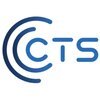ASE Trainee
60+ ASE Trainee Interview Questions and Answers

Asked in TCS

Q. What are the different types of complexities?
There are various types of complexities, such as time complexity, space complexity, algorithmic complexity, and computational complexity.
Time complexity refers to the amount of time taken by an algorithm to run, often measured in terms of the input size.
Space complexity refers to the amount of memory space required by an algorithm to run, also measured in terms of the input size.
Algorithmic complexity refers to the efficiency of an algorithm in terms of time and space require...read more

Asked in TCS

Q. What is your favorite programming language?
My favorite programming language is Python.
I love Python's simplicity and readability.
It has a vast library of modules and frameworks.
Python is versatile and can be used for web development, data analysis, and more.
It's also great for automation and scripting tasks.
Examples: Flask, Django, NumPy, Pandas, BeautifulSoup
ASE Trainee Interview Questions and Answers for Freshers

Asked in TCS

Q. What are lists and tuples? What are the differences between them?
Lists and tuples are both data structures in Python, but lists are mutable while tuples are immutable.
Lists are denoted by square brackets [] while tuples are denoted by parentheses ().
Lists can be modified after creation, while tuples cannot be modified.
Lists are used for collections of items that may need to be changed, while tuples are used for fixed collections of items.
Example: list = [1, 2, 3] ; tuple = (4, 5, 6)

Asked in TCS

Q. What are the differences between Merge Sort and Heap Sort?
Merge sort and Heap sort are both comparison-based sorting algorithms, but they differ in their approach and performance.
Merge sort is a divide-and-conquer algorithm that divides the input array into two halves, recursively sorts them, and then merges the sorted halves.
Heap sort is based on the concept of a binary heap, which is a complete binary tree where each node is greater than or equal to its children. It involves building a max heap and repeatedly extracting the maximu...read more

Asked in TCS

Q. What are the different methods of using CSS in web pages?
CSS can be used in web pages through inline, internal, and external methods.
Inline CSS is used within the HTML tag using the style attribute.
Internal CSS is used within the head section of the HTML document using the style tag.
External CSS is used in a separate file and linked to the HTML document using the link tag.
CSS preprocessors like Sass and Less can also be used to write CSS in a more efficient way.
CSS frameworks like Bootstrap and Foundation provide pre-written CSS co...read more

Asked in TCS

Q. Write code to print the following pattern: * ** *** **** *** ** *
The pattern represents a pyramid shape that increases and then decreases in number of stars per line.
The first half of the pattern increases from 1 to 4 stars.
The second half of the pattern decreases from 3 to 1 star.
This type of pattern is often used in programming exercises to test loops.
ASE Trainee Jobs


Asked in TCS

Q. Describe the CodeVita problems you solved from your second year of B.Tech until now, and your approach to solving them.
I have solved multiple CodeVita problems from 2nd year till now using various approaches.
Solved problems using dynamic programming, recursion, and brute force methods.
One of the problems I solved was to find the shortest path in a maze using BFS algorithm.
Another problem was to find the maximum sum subarray using Kadane's algorithm.
Approached problems by breaking them down into smaller sub-problems and solving them individually.
Used online resources and peer discussions to im...read more

Asked in Dassault Systemes

Q. WHAT ARE LIBRARIES. WHERE YOU HAVE USED IT.PROJECTS DEFINITLY MATTERS
Libraries are collections of resources, such as books, journals, and databases, that are available for use by the public.
Libraries provide access to a wide range of information resources, including books, magazines, newspapers, and online databases.
They are often used for research, studying, and leisure reading.
Examples of libraries include public libraries, academic libraries, and special libraries such as law libraries or medical libraries.
I have used libraries for research...read more
Share interview questions and help millions of jobseekers 🌟


Asked in Nokia

Q. Which programming languages are you comfortable with?
I am comfortable in programming languages such as Java, Python, and C++.
Java
Python
C++

Asked in Pod Digital

Q. How does JavaScript work?
JavaScript is a scripting language used to create interactive web pages.
JavaScript code is embedded in HTML and executed by web browsers.
It can manipulate HTML and CSS to create dynamic effects.
It supports object-oriented programming and functional programming.
JavaScript can be used for client-side and server-side scripting.
Popular JavaScript frameworks include React, Angular, and Vue.

Asked in TCS

Q. What are the features of those programming languages?
The features of programming languages vary, but some common ones include syntax, data types, control structures, and libraries.
Syntax: Programming languages have their own unique syntax for writing code.
Data Types: Languages support different data types such as integers, strings, and booleans.
Control Structures: Languages provide control structures like loops and conditionals for program flow.
Libraries: Many languages have libraries or frameworks that provide pre-written code...read more

Asked in TCS

Q. How do you store an ArrayList of Objects in a database using JDBC?
To store an ArrayList of Object in a database using JDBC, create a table with columns for each object property.
Create a table with columns for each object property
Use PreparedStatement to insert data into the table
Retrieve data using SELECT statement and ResultSet
Convert ResultSet to ArrayList of Objects

Asked in TCS

Q. Stack, Queues and their implementations?
Stacks and queues are data structures used to store and retrieve elements in a specific order.
Stacks follow the Last-In-First-Out (LIFO) principle, where the last element added is the first one to be removed.
Queues follow the First-In-First-Out (FIFO) principle, where the first element added is the first one to be removed.
Stacks can be implemented using arrays or linked lists.
Queues can also be implemented using arrays or linked lists.
Examples of stack usage include the undo ...read more

Asked in TCS

Q. 1.encapsulations 2.differnce b/w structure and class 3.difference b/w array and pointer 4.explain project
The interview questions cover topics like encapsulation, structures vs classes, arrays vs pointers, and project explanation.
Encapsulation refers to bundling data and methods that operate on the data into a single unit. Example: a class in object-oriented programming.
Structures are used to group different data types into a single unit, while classes can also include methods to operate on the data. Example: struct vs class in C++.
Arrays are collections of elements of the same d...read more

Asked in CTS Consulting & Technical Support

Q. What are the key differences between Java and C?
Java is an object-oriented programming language while C is a procedural programming language.
Java is platform-independent while C is platform-dependent.
Java has automatic garbage collection while C requires manual memory management.
Java has built-in support for multithreading while C requires external libraries.
Java has a larger standard library compared to C.
Java is more secure than C due to its strong type checking and exception handling.
C is faster than Java in terms of ex...read more

Asked in TCS

Q. What is encapsulation, and can you provide a real-world example?
Encapsulation is the concept of bundling data and methods that operate on the data into a single unit.
Encapsulation helps in hiding the internal state of an object and only exposing the necessary functionalities.
For example, a car can be seen as an encapsulated object where the internal details like engine, transmission, etc. are hidden and only the methods like start, stop, accelerate are accessible.
Encapsulation also helps in achieving data abstraction and data hiding in ob...read more

Asked in ServiceNow

Q. What is the use of the 'Static' keyword?
The 'Static' keyword is used to declare a variable or function that is shared by all instances of a class.
Static variables are initialized only once and retain their value throughout the program.
Static functions can be called without creating an instance of the class.
Static variables and functions are accessed using the class name instead of an object instance.
Static variables and functions are commonly used for counters, caches, and utility functions.
Asked in Sanmax Technologies

Q. What do you know about programming languages?
Programming languages are used to write instructions for computers to execute tasks.
Programming languages allow developers to communicate with computers
Different languages have different syntax and rules
Examples include Java, Python, C++, and JavaScript

Asked in TCS

Q. What is the collection framework, its advantages, and use cases?
The Java Collection Framework provides a set of classes and interfaces for storing and manipulating groups of objects.
Consists of interfaces like List, Set, and Map for different data structures.
ArrayList allows dynamic array resizing, useful for unknown data sizes.
HashMap provides key-value pair storage, enabling fast lookups.
LinkedList supports efficient insertions and deletions, ideal for queue implementations.
TreeSet maintains sorted order, useful for applications requiri...read more

Asked in TCS

Q. what is ml? what is data structure
ML stands for machine learning, a branch of artificial intelligence that focuses on developing algorithms to learn from and make predictions based on data. Data structure refers to the way data is organized and stored in a computer system.
ML (machine learning) is a subset of AI that uses algorithms to learn from and make predictions based on data.
Data structure refers to the way data is organized and stored in a computer system, such as arrays, linked lists, trees, etc.
Exampl...read more

Asked in TCS

Q. Explain DBMS, and some basic concepts of oop
DBMS is a software system that manages databases, while OOP is a programming paradigm based on objects and classes.
DBMS stands for Database Management System, which is software used to manage databases.
DBMS allows users to create, retrieve, update, and manage data in a database.
OOP stands for Object-Oriented Programming, a programming paradigm based on objects and classes.
OOP concepts include encapsulation, inheritance, polymorphism, and abstraction.
Examples of OOP languages ...read more

Asked in Accenture

Q. Why do you want to join Accenture?
I want to join Accenture for its innovative culture, diverse opportunities, and commitment to making a positive impact globally.
Accenture is a leader in technology and consulting, providing exposure to cutting-edge projects.
The company's commitment to diversity and inclusion aligns with my values, fostering a collaborative environment.
Accenture's focus on sustainability and social responsibility resonates with my desire to contribute to meaningful change.
The opportunity for c...read more

Asked in Accenture

Q. How do you create tables in HTML?
Tables in HTML can be created using the <table>, <tr>, and <td> tags.
Use the <table> tag to create the table structure.
Use the <tr> tag to define a row within the table.
Use the <td> tag to define data cells within each row.
You can also use <th> tag to define header cells within each row.
Use attributes like colspan and rowspan to merge cells or span across multiple rows/columns.

Asked in TCS

Q. What technologies have you used?
Various technologies are used in ASE including diagnostic tools, repair equipment, computer software, and specialized machinery.
Diagnostic tools such as OBD scanners and multimeters are used to identify vehicle issues
Repair equipment like hydraulic lifts and impact wrenches are used for maintenance tasks
Computer software such as repair manuals and diagnostic programs aid in troubleshooting
Specialized machinery like wheel alignment systems and engine analyzers help in precise ...read more

Asked in Wipro

Q. What are your strengths and weaknesses?
My strengths include adaptability and strong analytical skills, while my weaknesses involve perfectionism and occasional indecisiveness.
Strength: Adaptability - I quickly adjust to new environments and challenges, as seen when I transitioned to a new project with minimal downtime.
Strength: Analytical Skills - I excel at breaking down complex problems, demonstrated when I improved a process by analyzing data trends.
Weakness: Perfectionism - I tend to spend too much time on det...read more

Asked in Hexaware Technologies

Q. Write a program to find the second largest number in an array.
To find the second largest number in an array, iterate through the array while keeping track of the largest and second largest values.
Initialize two variables, 'largest' and 'secondLargest', to negative infinity.
Iterate through each number in the array.
If the current number is greater than 'largest', update 'secondLargest' to 'largest' and then update 'largest' to the current number.
If the current number is less than 'largest' but greater than 'secondLargest', update 'secondL...read more

Asked in TCS

Q. wokring in other technologies unix linux sap
Yes, I have experience working with Unix, Linux, and SAP.
Proficient in Unix and Linux command line interface
Experience with SAP modules such as FI/CO and MM
Familiarity with shell scripting and automation tools
Knowledge of system administration and troubleshooting
Examples: Configuring and maintaining Linux servers, writing shell scripts to automate tasks, working with SAP to manage financial transactions and inventory

Asked in Infosys

Q. Explain the core concepts of Object-Oriented Programming (OOP).
OOP concepts include encapsulation, inheritance, polymorphism, and abstraction, forming the foundation of object-oriented programming.
Encapsulation: Bundling data and methods that operate on the data within one unit (class). Example: A class 'Car' with attributes like 'speed' and methods like 'accelerate()'.
Inheritance: Mechanism where one class inherits properties and behaviors from another. Example: 'Dog' class inherits from 'Animal' class.
Polymorphism: Ability to present t...read more

Asked in R1 RCM

Q. Why do you want to work?
I am eager to work as an ASE Trainee to develop my skills, contribute to the team, and grow within a dynamic environment.
I am passionate about the automotive industry and want to apply my knowledge in a practical setting.
Working as an ASE Trainee will provide me with hands-on experience that is crucial for my career development.
I admire the company's commitment to innovation and quality, and I want to be part of a team that shares these values.
I believe this role will allow m...read more

Asked in Bosch Global Software Technologies

Q. How do you swap two numbers without using a temporary variable?
Swap two numbers using arithmetic operations without a temporary variable.
Use addition and subtraction: a = a + b; b = a - b; a = a - b.
Use multiplication and division: a = a * b; b = a / b; a = a / b (ensure b != 0).
Use bitwise XOR: a = a ^ b; b = a ^ b; a = a ^ b.
Interview Questions of Similar Designations
Interview Experiences of Popular Companies








Reviews
Interviews
Salaries
Users
















